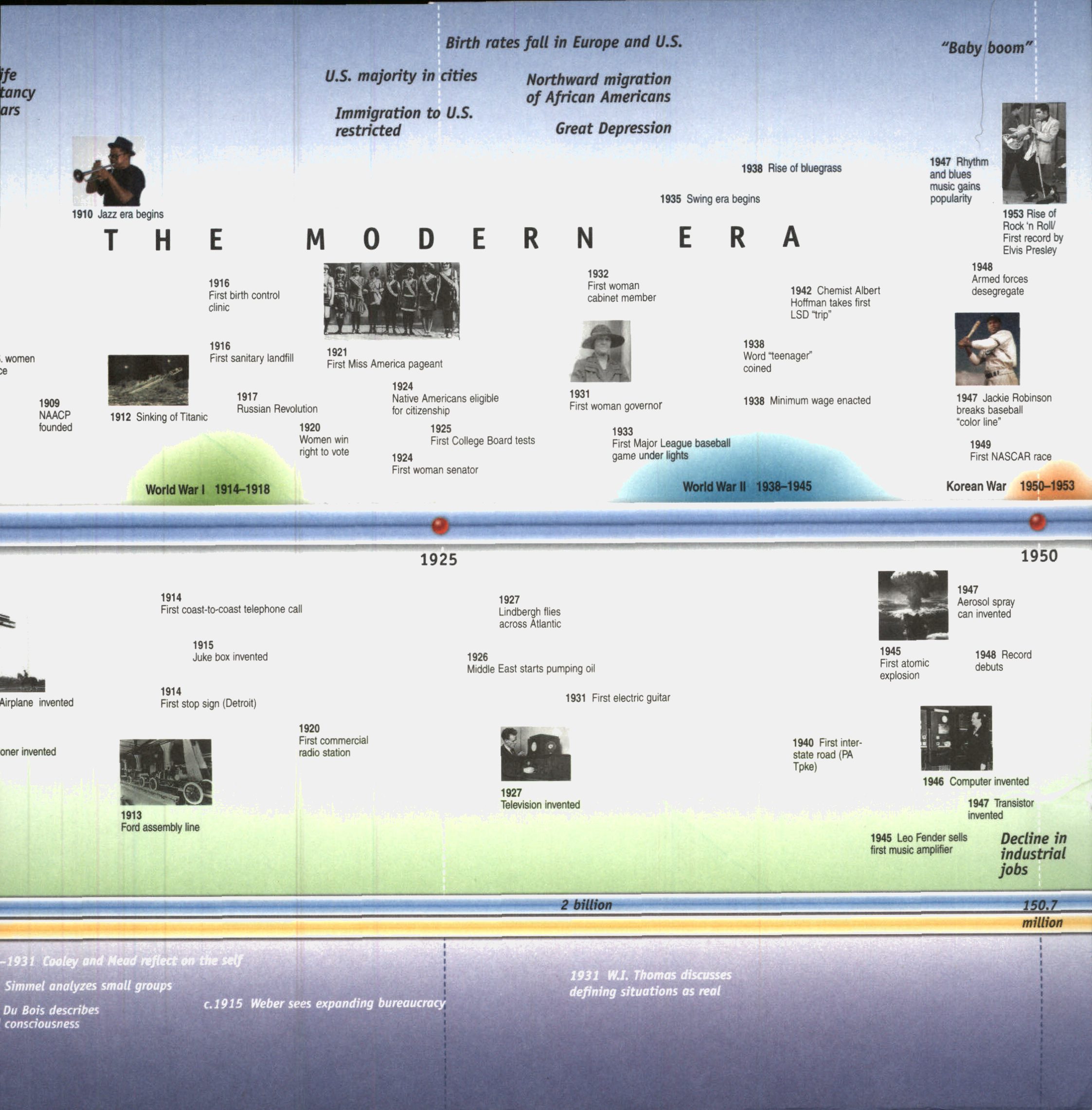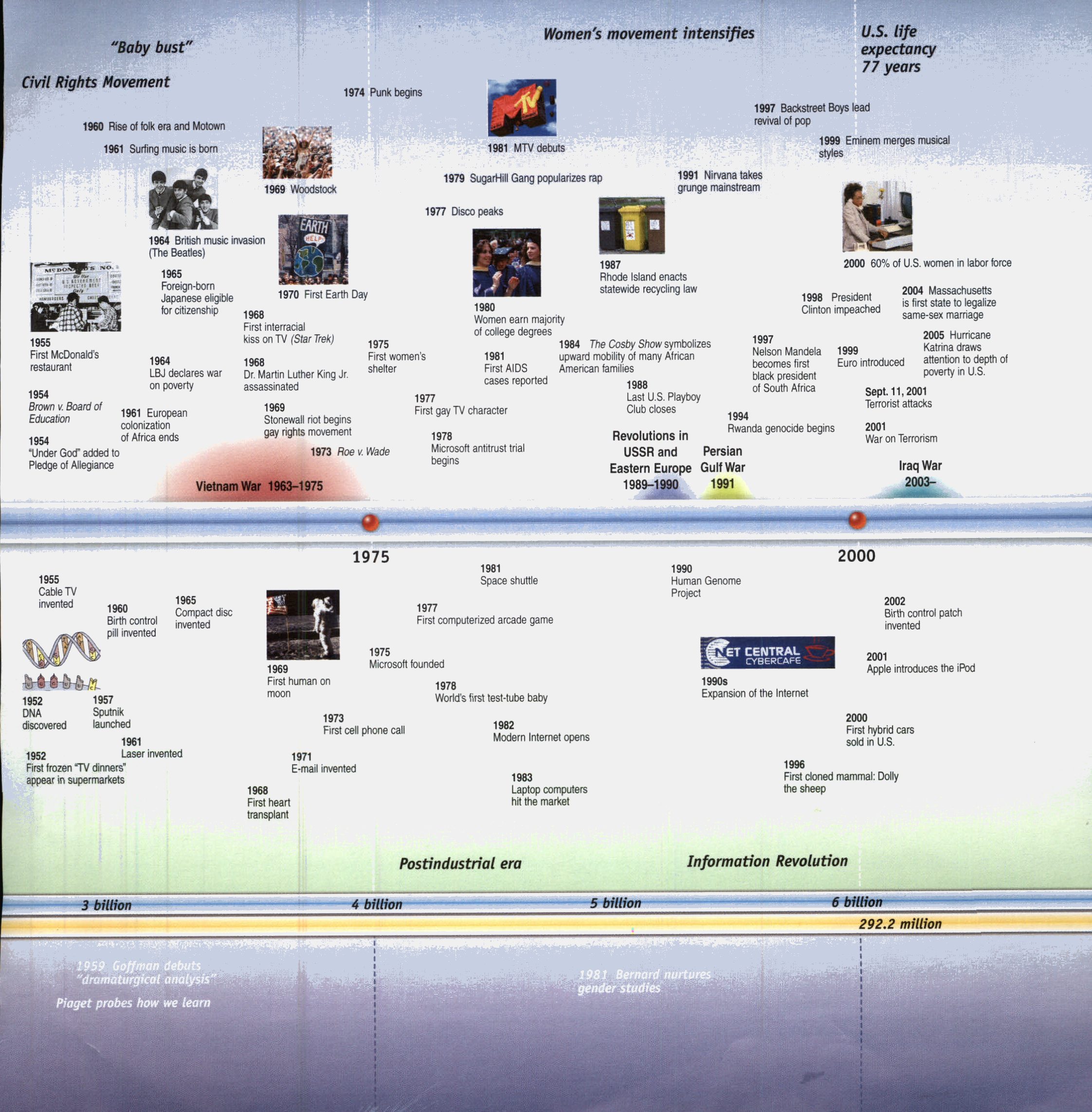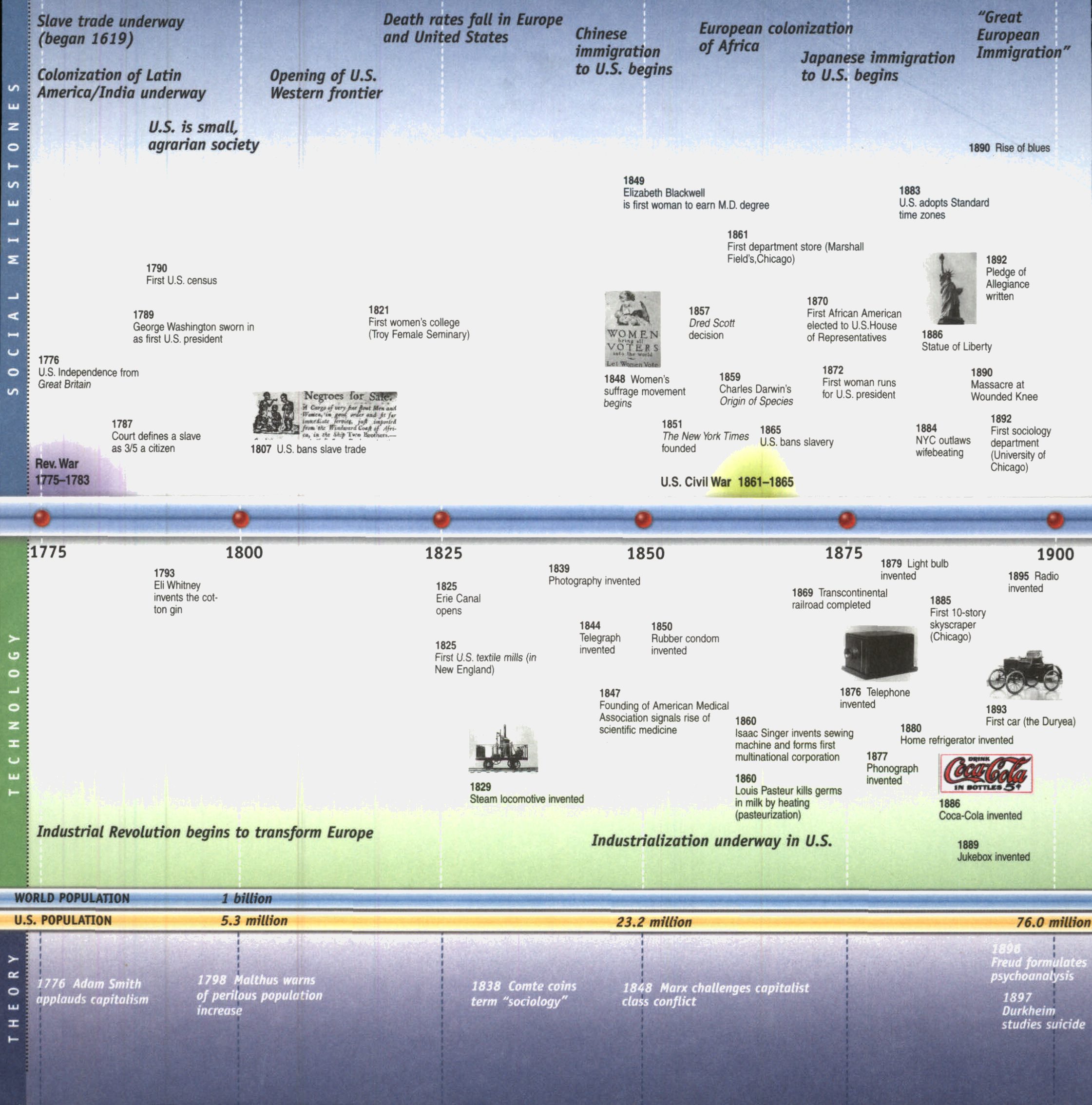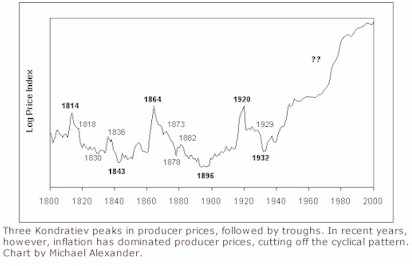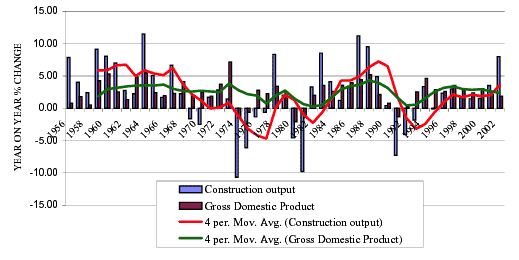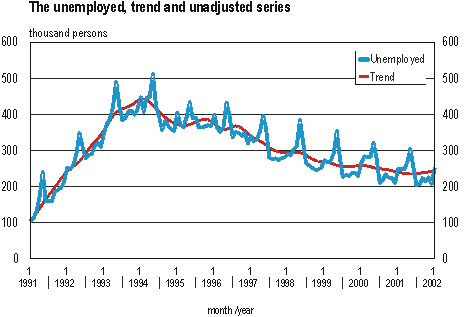External
Links
Top
|
Outline on Hunter
Gatherer Societies
circa 1.5 mm BP - 10 K BC
|
|
External
Links
|
| |
- Project: What knowledge
is needed to develop from a H-G society to an Ag society? |
Link
|
| |
Review: A socio historical overview demonstrates that humanity has
experienced distinct stages & milestones in its development |
|
|
Link
|
The Chart on
the Characteristics of the Hunter - Gatherer Stratification System
shows that compared to other systems, the hunter gatherer (H-G) society
has the highest level of equality |
|
|
Link
|
The Table Summarizing a Socio Historical
Overview shows that H-G society began
1.5 mya & ended 10 K BC |
|
|
|
Early humans evolved into our modern form and Neanderthal & other
human lines died out |
|
|
|
The Hunter - Gatherer era is made up of the Old Stone Age & the
Middle Stone Age |
|
|
|
Old Stone Age
c. 2 - 4 mya - 50 K BC |
|
|
|
Middle Stone Age
c. 30 K - 10 K BC |
|
|
|
New or Early Stone Age c. 9 K -
7 K BC aka Proto Neolithic ( is in the pre Empire Era
) |
|
| |
Modern humans developed from a variety of human lines: |
|
| |
- 1.5 mm BP H Erectus emerges from Africa |
|
| |
- Around 500,000 yrs. ago Homo Erectus evolves into Java man &
Peking man, then Neanderthals & Cromagnons |
|
| |
Homo Erectus, Java man, Peking man, Neanderthals, Cromagnons, et al
all lived in what we would recognize as H-G society |
|
| |
- Around 200,000 yrs. ago Homo Sapiens evolved |
|
| |
The early non modern human lines cook, wear clothes, use tools, live
in huts, make fire & have the earliest tribal society |
|
| |
There were many types of hunter gatherer societies,
& this analysis is done in broad generalities |
|
| |
For most of the H-G era, humans existed
in thousands of thousands of mostly isolated tribes w/ a tremendous, astounding
variety |
|
| |
At end of H-G period, circa 10K BC, there were less than 100 mm people
on Earth |
|
| |
As the name implies, people in H-G Society lived by hunting, done mostly
by males, & gathering, done mostly by females |
|
| |
See Also: Gender in the H-G Era |
|
| |
During the H-G Era, people lived on what they could obtain directly
from the environment w/ hand made tools such as spears, scrapers, etc. |
|
| |
Early in the H-G Era, people lived in
isolated tribal societies of about 50 or fewer people, and toward the end
of the era, up to 300 people of networked tribes |
|
| |
Toward the end of the H-G era, tribes might be made of several hundred
people |
|
| |
Tribes were small because w/ the early tool technology, a given area
could only support a small tribe |
|
| |
Because a given area would only support a tribe for a short period
of time, hunter gatherers are often nomadic |
|
| |
In the H-G era, people lived at or near
the subsistence level w/ no surplus created for hard times |
|
| |
Thus, every person carried their own weight & the weak had to be
let go |
|
| |
During the H-G era, life was hard, as Hobbes said, life was 'nasty,
brutish, & short' & yet people did not spend all their time working |
|
| |
During the H-G era, it is estimated that people, in general, worked
less than 30 hrs. a week, & spent the remainder of the time doing housework,
in leisure, in ritual celebrations, socializing, etc. |
|
| |
During the H-G era, it is estimated that people, in general, spent
21 hrs. a week doing housework while in industrial society, people spend
60 hrs. a week doing housework |
|
| |
During the H-G era, because there was no surplus, there was no patriarchy
& no racism |
|
| |
It is important to note that
99 % of human existence has been in H-G society, thus
in many respects it is all form of modern human existence that is "abnormal" |
|
| |
Thus, recognizable, modern humans lived in H-G society for approximately
1.5
mm yrs |
|
| |
By 13,000 yrs ago (11,000 BC), the earliest villages developed |
|
| |
City states follow about 7,000 yrs after the development of
the earliest villages (3,000 BC) |
|
| |
Humans have lived in ancient society (city & nation states)
for approximately 5,000 yrs (only .5% of HG society) |
|
| |
Humans have lived in modern industrial society for approximately
700 yrs (only .07% of HG society) |
|
| |
Thus sociologists see ancient & modern societies as big experimentswhich
have not yet proven their resilience |
|
| |
Agriculture has its roots in H-G society, but it was
only toward the end that limited agricultural practices were discovered
& utilized |
|
| |
Early in the H-G Era, Homo Erectus lived only by hunting & gathering |
|
| |
Later in the H-G Era, Homo Sapiens, who emerged approximately 1/2 mm
yrs ago, began to understand basic concepts such as:
- the Male role in procreation
- seasonal cycles
- fertility cycles in humans & animals
- the role of seeds
- the methods for domestication of animals |
|
| |
And toward the end of the H-G era, the understanding of procreation,
the seasons & so on, allowed for the limited sewing of crops &
the domestication of animals |
|
| |
It was toward the end of the H-G era, that limited agricultural techniques
were perfected & put into practice |
|
| |
The first domesticated plant was wheat, & the first domesticated
animal was either the dog or the goat |
|
|
|
Agricultural practices did not become widespread until the next era:the
pre empire era 10 K BC to 3 K BC |
|
|
|
Many analysts believe it is agriculture itself that allowed for
the development of civilization
See The FOUR Ag
revolutions
See The 1st ag
revolution: The Beginnings & Spread of Agriculture |
|
|
|
A classic debate btwn Hobbes & Rousseau concerns whether
in H-G society life is 'nasty, brutish, & short' or 'the idealic village' |
|
| |
See Also: Hobbes |
|
| |
See Also: Rousseau |
|
|
|
The Hobbes - Rousseau debate is essentially about 'What was the nature
of prehistoric woman & man?' 'What was the nature of prehistoric society?' |
|
| |
Observers continue to ask today, "Who is more accurate in depicting
the H-G Era, Hobbes or Rousseau?" because the H-G life has many noble &
wonderful qualities that keep people in touch w/ the Earth & other
people, but it is a difficult life |
|
|
|
There was a high level of cooperation w/in tribes |
|
| |
"Work" in H-G society was hunting & gathering & you
shared
all your production |
|
| |
There were no markets & there was minimal trading among tribes |
|
| |
In viewing H-G society as more cooperative, Rousseau was more accurate
than Hobbes |
|
| |
Hunting & gathering had to be cooperative in order to function |
|
| |
Because of limited specialization & isolation from other societies,
H-G societies had high levels of consensus |
|
| |
Ownership was communal because subsistence level production meant that
everything had to be shared |
|
| |
In H-G society, people have more free time than do modern, industrial
people |
|
| |
People spend their free time relaxing, & partying in communal festival
& rituals |
|
| |
Conflict btwn tribes was limited due to isolation & due to the
fact that there was little to gain because all production was at the subsistence
level, yielding no surplus to be gained through conquest |
|
| |
Conflict was limited to struggles over turf & women |
|
| |
Primitive weapons disallowed dominance by one or a few |
|
|
blank
|
All types of relationships, economic, familial, etc. were essentially
egalitarian in the H-G Era |
|
|
blank
|
Egalitarian relationships were upset / abandoned w/ the development
of agriculture, causing for the first time, class conflict |
|
|
blank
|
Gender differentiation existed in H-G society, but there was
total equality |
|
|
blank
|
In H-G society, racial differentiation was recognized only in
the context of tribal ("nationalistic") differentiation & therefore
was not a basis for inequality/discrimination |
|
|
blank
|
The transition from H-G to Pre Empire Era (aka "civilization")
occurred in different "hearth areas" at different times |
|
| |
During the Proto Neolithic or Early Stone Age:, circa 9000 to 7000
BC, the transition to an agricultural econ begins in the mid east &
other hearth areas |
|
|
blank
|
Hearth areas are settings where new practices developed, &
then spread to other areas |
|
| |
( Hearth areas may be thought of as "proto cores" visa vie World Systems
Theory ) |
|
|
blank
|
There are SIX major hearth areas which were found in Africa,
the mid east, the Indian subcontinent, south Asia, China, & the America |
|
|
1. Africa: In Africa, a hearth area of civilization developed
along the Nile River & south, & along Mediterranean on the African
north coast |
|
|
2. Middle East: In the mid east, in what is now called
the Fertile Crescent: a hearth area of civilization developed in
Iran & Iraq, Jordan & Israel, Turkey |
|
|
3. Indian Subcontinent: In the Indian subcontinent, a
hearth area of civilization developed along the Indus & Ganges Rivers |
|
|
4. South Asia: In So Asia, a hearth area of civilization
developed in Assam, Bangladesh, Burma, India |
|
|
5. China: In China, a hearth area of civilization developed
along the coast & major rivers, esp the Huang & Yangtze Rivers
River |
|
|
6. Americas: In the Americas, a hearth area of civilization
developed in Central Am & in So America in the Andes Mtns |
|
|
The hearth areas developed relatively simultaneously |
|
|
blank
|
Agricultural practices first developed in these SIX major hearth areas |
|
| |
Hunter gatherer, nomadic societies still exist on every continent today,
but the numbers of such societies is dwindling rapidly |
|
| |
Modern H-G societies exist in thinly populated, remote tropical, arctic,
& desert areas |
|
|
blank
|
The next historic stage is Pre Empire Era
10 K BC to 3 K BC
- New Stone Age continues
- "Civilization" & history begin
- 1st widespread ag develops
- 1st permanent villages develop |
|


